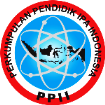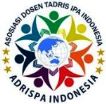The Acceptance of Kumatalibi.com for Biology Learning Enrichment: Prospective Teacher Students' Perspective
Abstract
This study investigates the acceptance of prospective biology teacher students toward the Kumatalibi.Com, a web-based digital learning resource center. The research employs the Unified Theory of Acceptance and Use of Technology (UTAUT) model to examine the factors influencing technology adoption. A total of 100 prospective biology teacher students from a state Islamic university in Bandung participated as respondents. Data were collected through questionnaires and analyzed using SmartPLS software. The study focused on four key UTAUT factors: affective need (14.2%), effort expectancy (16.5%), facilitating conditions (36.9%), and performance expectancy (24.1%). The findings reveal significant insights into the factors driving the acceptance of the Kumatalibi.Com web-based learning resource. The results indicate that facilitating conditions play a dominant role, followed by performance expectancy, effort expectancy, and affective need. These insights are crucial for developing effective strategies to enhance the promotion and use of the Kumatalibi.Com platform in educational settings. The study contributes to a better understanding of the technology acceptance process, offering valuable implications for the design and implementation of digital learning tools in teacher education programs.
Keywords: biology education, perspective of prospective teacher students, SEM-PLS, technology acceptance, UTAUT
Full Text:
PDFReferences
Aguayo-Arrabal, N., Ram, de las M., & Irez-Delgado, C. (2020). A Proposal of Evaluation Criteria for The Quality of ESL/EFL Websites for Autonomous Learning. In International approaches to bridging the language gap (pp. 102–117). IGI Global Scientific Publishing.
Allison, R., Hayes, C., McNulty, C. A. M., Young, V., & others. (2019). A Comprehensive Framework to Evaluate Websites: Literature Review And Development of GoodWeb. JMIR Formative Research, 3(4), e14372.
Apriyani, D. L., Pahlawansjah, P., & Indarto, I. (2023). Pengaruh Kepemimpinan Transformasional dan Lingkungan Kerja Terhadap Kinerja Pegawai dengan Komitmen Organisasi Normatif Sebagai Intervening. In Jiip - Jurnal Ilmiah Ilmu Pendidikan. https://doi.org/10.54371/jiip.v6i9.2255
Aslan, A., & Zhu, C. (2016). Influencing Factors and Integration of ICT Into Teaching Practices of Pre-Service and Starting Teachers. In International Journal of Research in Education and Science. https://doi.org/10.21890/ijres.81048
Belay, M. T., Khatete, D., & Mugo, B. C. (2020). Teachers’ Attitude Towards Integrating Ict in Classroom Instruction in Teaching and Learning Biology in Secondary Schools in the Southern Region, Eritrea. In Journal of Education and Practice. https://doi.org/10.47941/jep.393
Bertha, A., & Santosa, B. (2022). Pengaruh Efikasi Diri Terhadap Kematangan Karir Remaja Akhir Di Jorong Kemajuan Nagari Sinuruik Kecamatan Talamau Kabupaten Pasaman Barat. https://doi.org/10.31004/irje.v3i1.211
Board, S. (2020). Storyboard. The SAGE International Encyclopedia of Mass Media and Society. https://doi.org/10.5040/9781474293754.0209
Darmawan, A. K., & Umamah, N. (2019). Testing of Technology Acceptance Model on E-Learning Based Edmodo Framework: A Perspective of Students Perception. In Journal of Information Systems and Informatics. https://doi.org/10.33557/isi.v1i1.3
De Carvalho, Í. N., El-Hani, C., & Nunes-Neto, N. (2020). How Should We Select Conceptual Content for Biology High School Curricula? Science & Education, 29, 513–547. https://doi.org/10.1007/s11191-020-00115-9
Har, E., Osman, K., & Roza, W. (2019). Influence of the Use of ICT in Biology Learning Junior High Schools West Sumatera, Indonesia. In Journal of Engineering and Applied Sciences. https://doi.org/10.36478/jeasci.2020.803.809
Hernández, J. C. A., Romo, H. S. G., Gutiérrez, A. J. M., Núñez, H. G., de la Garza, G. V., & Hernández, J. D. A. (2013). Comprehensive Website of Digital Resources For Learning: A Tool Created By Students For Students. Edulearn13 Proceedings, 2586–2591.
Kurnia, T. D., Lati, C., Fauziah, H., & Trihanton, A. (2019). Model Addie untuk Pengembangan Bahan Ajar Berbasis Kemampuan Pemecahan Masalah Berbantuan 3D Pageflip. Prosiding Seminar Nasional Pendidikan Matematika (SNPM), 1(1), 516–525.
Kurniawan, M. R. (2017). Analisis Karakter Media Pembelajaran Berdasarkan Gaya Belajar Peserta Didik. JINoP (Jurnal Inovasi Pembelajaran), 3(1), 491–506.
Mohamed, A. O. (2025). The Effect of Design on the Viewer’s Perception of Media Content and Its Role in Problem Solving. Journal of Ecohumanism. https://doi.org/10.62754/joe.v4i1.5956
Muhaimin, M., Habibi, A., Mukminin, A., Saudagar, F., Pratama, R., Wahyuni, S., Sadikin, A., & Indrayana, B. (2019). A sequential explanatory investigation of TPACK:: Indonesian science teachers’ survey and perspective. JOTSE, 9(3), 269–281.
Munawaroh, I. (2015). Urgensi Penelitian dan Pengembangan. Studi Ilmiah UKM Penelitian, 1(1), 1–5.
Puji, K. M., Gulo, F., & Ibrahim, A. R. (2014). Pengembangan Multimedia Interaktif untuk Pembelajaran Bentuk Molekul di SMA. Jurnal Penelitian Pendidikan Kimia, 1(1), 59–65.
Putranto, A. (2011). Perancangan Sistem E-Learning Berbasis Web dengan Analisis SWOT pada Sekolah Menengah Umum. ComTech: Computer, Mathematics and Engineering Applications, 2(2), 646–661.
Putriani, E., Hamid, A., & Evendi, E. (2022). Pengaruh Model Pembelajaran Flipped Classroom Terhadap Hasil Belajar Peserta Didik Dalam Pembelajaran Fisika. In Silampari Jurnal Pendidikan Ilmu Fisika. https://doi.org/10.31540/sjpif.v4i2.1868
Rahayu, E., Hardiani, W. A. A., & Yuliamir, H. (2020). Pengaruh Motivasi Intrinsik, Lingkungan Belajar, Dan Dukungan Keluarga Terhadap Semangat Belajar Mahasiswa Program Pascasarjana Sekolah Tinggi Ilmu Ekonomi Pariwisata Indonesia. In Jurnal Manajemen Stie Muhammadiyah Palopo. https://doi.org/10.35906/jm001.v6i2.600
Riinawati, R. (2021). Hubungan Penggunaan Model Pembelajaran Blended Learning Terhadap Hasil Belajar Matematika Siswa Sekolah Dasar. In Edukatif Jurnal Ilmu Pendidikan. https://doi.org/10.31004/edukatif.v3i6.1083
Sadikin, A., & Hakim, N. (2019). Pengembangan Media E-Learning Interaktif Dalam Menyongsong Revolusi Industri 4.0 Pada Materi Ekosistem Untuk Siswa SMA: Interactive Media Development of E-Learning in Welcoming 4.0 Industrial Revolution on Ecosystem Material for High School Students. Biodik, 5(2), 131–138.
Sadiman, A. S. (2020). Media Pendidikan pengertian, pengembangan dan pemanfaatannya.
Sugiono. (2016). Metode Penelitian Kunatitatif Kualitatif dan R&D. Alfabeta, Bandung.
Xu, Q. (2024). Digital Media Design Based on Human-Computer Interaction and Image Processing. 2024 International Symposium on Intelligent Robotics and Systems (ISoIRS), 309–313. https://doi.org/10.1109/ISoIRS63136.2024.00067
Yuberti, Y. (2014). “ Penelitian Dan Pengembangan” Yang Belum Diminati Dan Perspektifnya. Jurnal Ilmiah Pendidikan Fisika Al-Biruni, 3(2), 1–15.
Yueh, H., Huang, J.-Y., & Chang, C. (2015). Exploring Factors Affecting Students’ Continued Wiki Use for Individual and Collaborative Learning: An Extended UTAUT Perspective. In Australasian Journal of Educational Technology. https://doi.org/10.14742/ajet.170
DOI: http://dx.doi.org/10.24014/jnsi.v8i1.30518
Refbacks
- There are currently no refbacks.

Journal of Natural Science and Integration
E-ISSN: 2620-5092 P-ISSN: 2620-4967
Published By:
Department of Science Education, Faculty of Education and Teacher Training,
State Islamic University of Sultan Syarif Kasim Riau, Indonesia
Mailing Address:
Jl. H.R Soebrantas Km. 15 No. 155
Kelurahan Simpang Baru
Kecamatan Tuah Madani, Pekanbaru, Riau, Indonesia
Email: jnsi.tadrisipa@uin-suska.ac.id
Indexed By:
Journal of Natural Science and Integration is licensed under a Creative Commons Attribution 4.0 International License.


_-_Copyy2.png)






.jpg)
.png)
.jpg)
.jpg)




